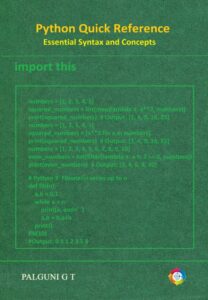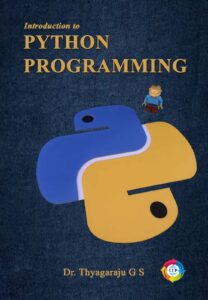1. Context-Aware Computing for Ubiquitous Computing Applications
Context-aware computing refers to systems that can sense, interpret, and respond to environmental, user, or situational contexts to deliver personalized and relevant services. It is a key component of ubiquitous computing, where technology seamlessly integrates into daily life.
Current Trends in Research:
- Context Modeling and Representation: Developing more robust and scalable models to accurately represent dynamic and complex environments, using ontologies, probabilistic models, and machine learning.
- Edge and Fog Computing: Utilizing edge devices and fog nodes for real-time context sensing and processing, reducing latency and improving scalability.
- IoT Integration: Expanding the use of IoT devices to enhance contextual data collection and provide intelligent, adaptive services in smart homes, cities, and healthcare.
- Context-Aware Security: Implementing adaptive security mechanisms that respond dynamically to changing user contexts and threats.
- Human-Centric Applications: Creating systems that focus on enhancing user experience, such as smart healthcare monitoring, personalized retail, and intelligent transportation systems.
What is Context Aware Computing?
References :
- Context-Aware Computing | The Encyclopedia of Human-Computer Interaction, 2nd Ed.
- Context-aware pervasive systems – Wikipedia
- Context-Aware Computing
- 1502.00164
- (PDF) A Survey on context-aware systems
- wmc-94-schilit.pdf
- Context-Aware Computing | 12 | Ubiquitous Computing Fundamentals | A
- 11-intro-context-aware
- Context-aware systems: A literature review and classification
- Dey.pdf
- imecs2008.pdf
- A Survey of Context-Aware Mobile Computing Research
- Microsoft Word – 3D139F36-5FE8-84B4.doc
- معز1.pdf
- (Context Aware Computing for The Internet of Things: A Survey
- ijertv10n1spl_79.pdf
2. Artificial Intelligence (AI):
Artificial Intelligence is the branch of computer science that develops systems capable of performing tasks that typically require human intelligence, such as learning, reasoning, and decision-making. It includes a variety of subfields, with evolving trends in research, such as:
- Generative AI: Models like GPT and DALL-E create content, including text, images, and music, driving advancements in creativity and automation.
- Agentic AI: The development of autonomous agents capable of setting their own goals, reasoning about their actions, and adapting dynamically to their environment.
- Explainable AI (XAI): Ensuring that AI systems provide transparent and interpretable outputs, critical for applications in healthcare, finance, and law.
- AI Ethics and Bias Mitigation: Researching frameworks to create ethical, unbiased, and equitable AI systems.
- Edge AI: Optimizing AI models to run on edge devices, enabling real-time, low-latency applications in IoT and smart systems.
- AI in Healthcare: Revolutionizing diagnostics, predictive medicine, and drug discovery using AI-based tools and frameworks.
References
- Artificial Intelligence Tutorial | AI Tutorial – GeeksforGeeks
- Artificial Intelligence Tutorial: Learn AI for Free
- Machine Learning Intro
- Artificial Intelligence (AI) – Javatpoint
- Generative AI Tutorial
3. Contextual Artificial Intelligence
Contextual AI builds on the foundation of AI by incorporating contextual information to improve decision-making, reasoning, and interaction. It enables systems to adapt to the nuances of human behavior and environmental conditions.
Current Trends in Research:
- Dynamic Context Integration: Developing AI systems capable of integrating real-time contextual data, such as location, time, and user preferences, to make more accurate predictions and decisions.
- Explainable Contextual AI: Ensuring that contextual factors influencing AI decisions are transparent and interpretable, particularly in sensitive domains like healthcare and finance.
- Multimodal Context Understanding: Combining data from multiple sources, such as visual, auditory, and textual inputs, to enhance contextual comprehension.
- Applications in Natural Language Processing: Advancing conversational AI to understand and respond based on user context, improving chatbot interactions and virtual assistants.
- Adaptive Learning: Creating AI models that dynamically adapt their behavior based on changing contexts, such as user intent, environmental changes, or social interactions.
4. Quantum Computing:
Quantum Computing utilizes quantum mechanical principles like superposition, entanglement, and quantum tunneling to solve problems that are computationally infeasible for classical systems. Current trends in research include:
- Quantum AI: Integrating quantum computing with artificial intelligence to solve high-dimensional problems, optimize machine learning algorithms, and improve data processing speeds exponentially.
- Quantum Algorithms: Advancing algorithms such as Shor’s (for cryptography) and Grover’s (for search optimization) while exploring new quantum-inspired AI algorithms.
- Error Correction and Fault Tolerance: Innovating techniques to reduce decoherence and enhance the reliability of quantum systems.
- Quantum Cryptography: Strengthening secure communication with quantum key distribution (QKD) protocols, ensuring protection against both classical and quantum cyberattacks.
- Hardware Advancements: Improving the stability and scalability of quantum systems through research in superconducting qubits, trapped ions, and photonic platforms.
- Applications in Complex Systems: Leveraging quantum computing for simulations in drug discovery, climate modeling, and financial systems.
References
- The Basics of Quantum Mechanics – THE QUANTUM LÄND
- Basic Quantum Computing — Introduction | by Charlie Thomas | Medium
- How I Learn Quantum Computing. A deep dive into the quantum world and… | by Christophe Pere | The Startup | Medium
- Quantum Computing for Complete Beginners | by Angjelin Hila | Towards Data Science
- Quantum Computing Tutorial
- Introduction to quantum computing – GeeksforGeeks
- PowerPoint Presentation IQC
- IBM Quantum Learning
- Tutorial: Quantum Programming
- Python Programming Tutorials
5. Theory of Mind (ToM):
The Theory of Mind, originating from psychology and cognitive science, refers to the ability to infer and attribute mental states like beliefs, desires, and intentions to oneself and others. Research in ToM within AI aims to create systems that understand and predict human behavior. Key trends include:
- Socially-Aware AI: Developing AI systems that infer emotions, intentions, and social cues in real-time, enhancing human-AI interaction.
- Human-Robot Collaboration: Designing robots that anticipate human actions and intentions, facilitating effective teamwork in manufacturing, healthcare, and service industries.
- Neuroscience-Inspired Models: Applying insights from human cognition and neuroscience to build neural networks capable of reasoning about mental states.
- Ethical Implications: Examining the societal and ethical impacts of ToM-enabled AI, particularly concerning privacy, trust, and psychological safety.
- Autonomous Systems: Enhancing autonomous vehicles, virtual assistants, and other systems by enabling them to predict user behavior and adapt their responses accordingly.
References :
- Theory of Mind | Psychology Today
- The Basic Theory of the Mind
- Theory of Mind | Noba
- What Is Theory Of Mind In Psychology?
- Theory of Mind AI in Artificial Intelligence | EJable
- Theory of Mind AI: Bringing Human Cognition to Machines | LinkedIn
These fields—AI, Quantum Computing, and ToM—intersect to shape the future of intelligent, ethical, and high-performance computational systems.



